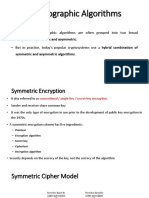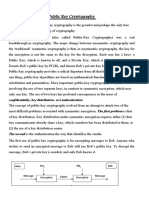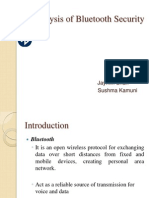0% found this document useful (0 votes)
15 views10 pagesBasic Protocols in Cryptography
The document outlines basic protocols in cryptography, focusing on key exchange with digital signatures, key and message transmission, and various cryptographic algorithms like AES, DES, RSA, and SHA. It discusses advantages of cryptography such as access control, secure communication, and protection against attacks, as well as the concept of key and message broadcast for secure mass communication. Additionally, it highlights Authentication and Key Exchange (AKE) protocols that ensure secure key establishment and identity verification among parties.
Uploaded by
SANGHAMITRA DEGREE COLLEGECopyright
© © All Rights Reserved
We take content rights seriously. If you suspect this is your content, claim it here.
Available Formats
Download as PPTX, PDF, TXT or read online on Scribd
0% found this document useful (0 votes)
15 views10 pagesBasic Protocols in Cryptography
The document outlines basic protocols in cryptography, focusing on key exchange with digital signatures, key and message transmission, and various cryptographic algorithms like AES, DES, RSA, and SHA. It discusses advantages of cryptography such as access control, secure communication, and protection against attacks, as well as the concept of key and message broadcast for secure mass communication. Additionally, it highlights Authentication and Key Exchange (AKE) protocols that ensure secure key establishment and identity verification among parties.
Uploaded by
SANGHAMITRA DEGREE COLLEGECopyright
© © All Rights Reserved
We take content rights seriously. If you suspect this is your content, claim it here.
Available Formats
Download as PPTX, PDF, TXT or read online on Scribd
/ 10























































































